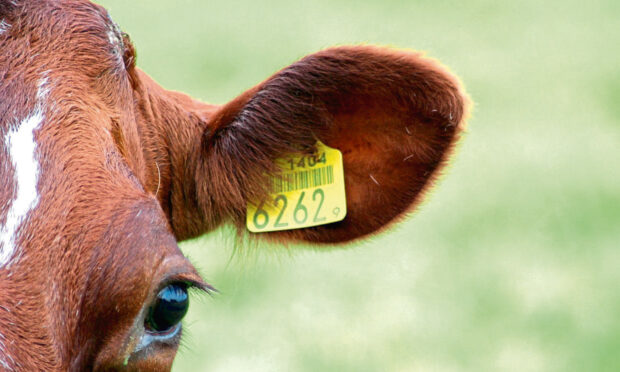A project investigating the factors impacting on ear tag loss and retention in cattle and sheep in Scotland has launched an online survey to build on information gathered in stakeholder interviews.
Ear tags are a fundamental part of livestock traceability and while timely replacement of lost and damaged tags is vital in maintaining the integrity of these systems, it can come at a cost to farmers and may have impacts on animal welfare.
The structure of Scottish livestock farming – with many independent small-holdings, crofts and farms operating in diverse settings – can make it difficult to identify trends behind lost and damaged ear tags.
By collecting data from livestock keepers about their practical experience, researchers from Scotland’s Rural College (SRUC) aim to develop a better understanding of the various factors, and their interactions, contributing to ear tag losses.
Following earlier consultations, researchers found that ear tag loss and retention are linked to the way tags are applied, the environment they are exposed to and the performance of the tags themselves.
Team leader Dr Sam Beechener said: “Support with this project so far has been very encouraging. We’ve come to understand that lost, damaged and unreadable tags are a function of initial application, the external environment and tag performance – a so-called ‘ear tagging triangle.’
“We’re keen to explore these interactions in the next stage of the project by collecting data from a broad cross section of livestock keepers across Scotland through a new survey.”
The interactive form, which has been designed so participants only see those questions relevant to the stock they keep, should take no longer than 10-15 minutes to complete with all responses treated in confidence. Results will be shared to encourage and inform discussion on a topic that is expected to be of interest to many of Scotland’s livestock keepers.
The project is funded by the Scottish Government with a view to establishing how ear tag losses are impacting on livestock keepers, what the causes are, and how they might be addressed.
The survey is available at:
https://sruc.onlinesurveys.ac.uk/eartags_in_sheep_and_cattle_in_scotland
.
For any questions about the project or to request a hard copy of the form, please leave a message for the project team on 07714 528 850 or email: eartagloss@sruc.ac.uk.
